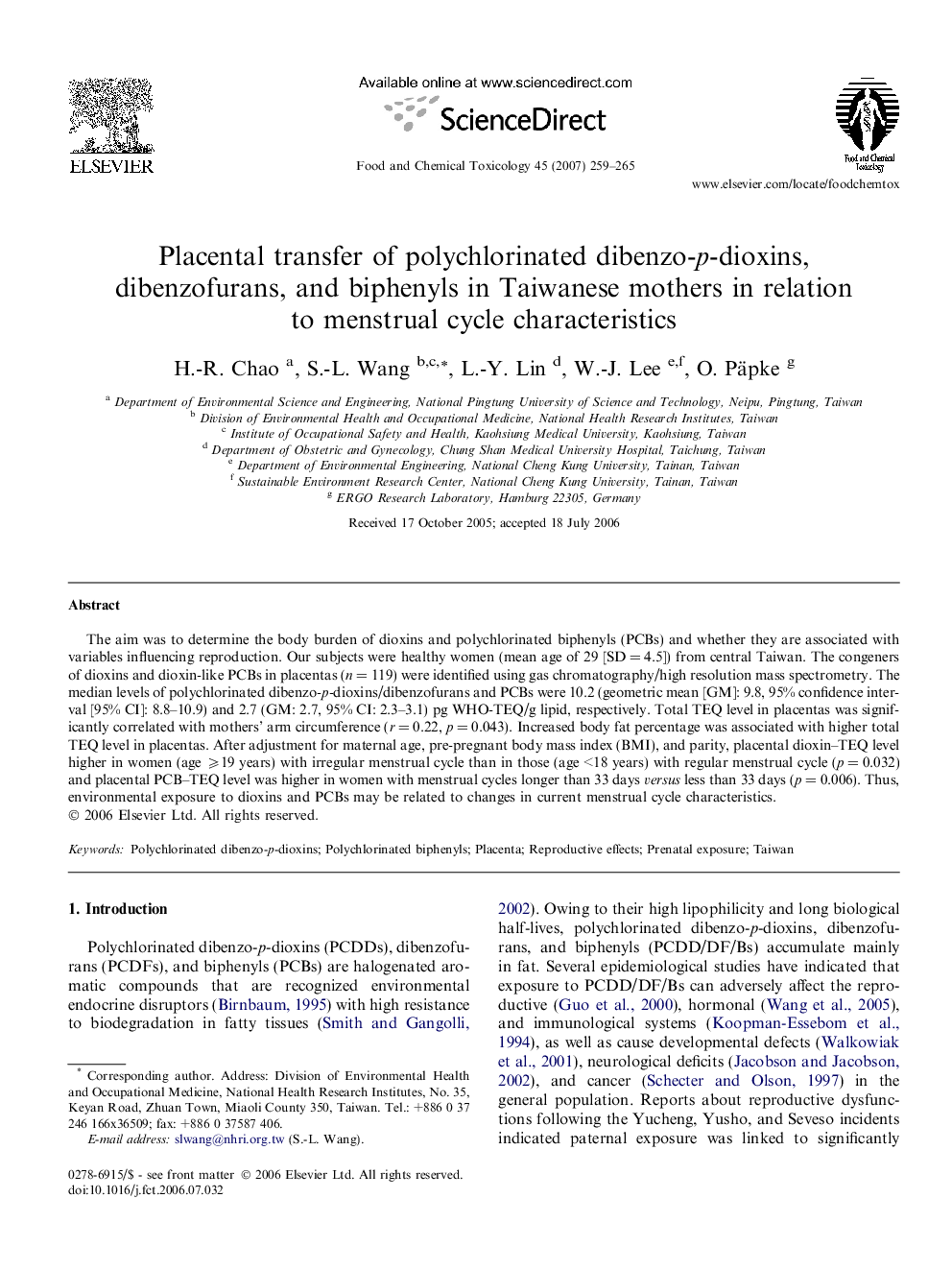| Article ID | Journal | Published Year | Pages | File Type |
|---|---|---|---|---|
| 2586944 | Food and Chemical Toxicology | 2007 | 7 Pages |
The aim was to determine the body burden of dioxins and polychlorinated biphenyls (PCBs) and whether they are associated with variables influencing reproduction. Our subjects were healthy women (mean age of 29 [SD = 4.5]) from central Taiwan. The congeners of dioxins and dioxin-like PCBs in placentas (n = 119) were identified using gas chromatography/high resolution mass spectrometry. The median levels of polychlorinated dibenzo-p-dioxins/dibenzofurans and PCBs were 10.2 (geometric mean [GM]: 9.8, 95% confidence interval [95% CI]: 8.8–10.9) and 2.7 (GM: 2.7, 95% CI: 2.3–3.1) pg WHO-TEQ/g lipid, respectively. Total TEQ level in placentas was significantly correlated with mothers’ arm circumference (r = 0.22, p = 0.043). Increased body fat percentage was associated with higher total TEQ level in placentas. After adjustment for maternal age, pre-pregnant body mass index (BMI), and parity, placental dioxin–TEQ level higher in women (age ⩾19 years) with irregular menstrual cycle than in those (age <18 years) with regular menstrual cycle (p = 0.032) and placental PCB–TEQ level was higher in women with menstrual cycles longer than 33 days versus less than 33 days (p = 0.006). Thus, environmental exposure to dioxins and PCBs may be related to changes in current menstrual cycle characteristics.
